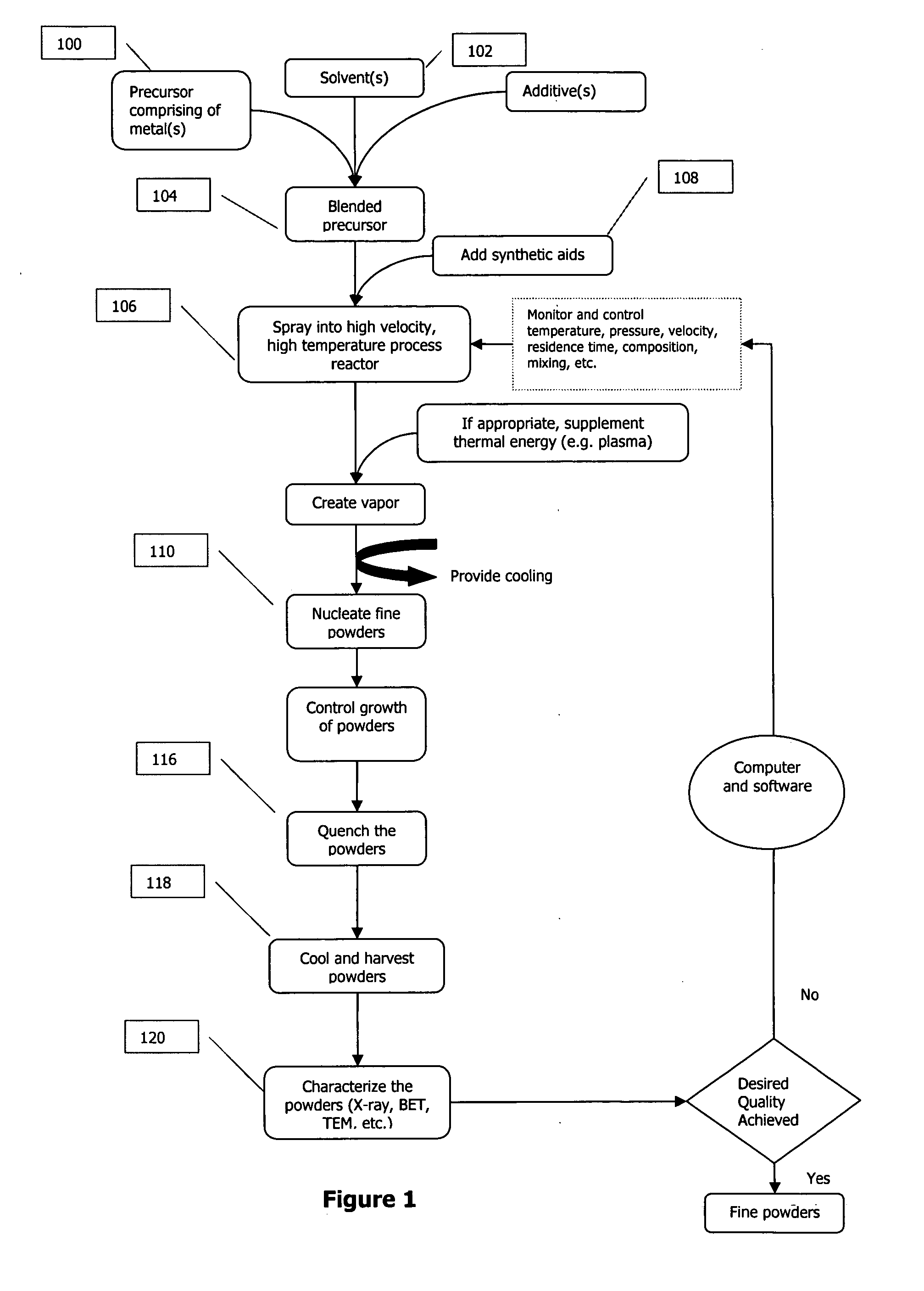Nanoparticles of rare earth oxides
a rare earth oxide and nanoparticle technology, applied in the direction of lanthanide oxides/hydroxides, yittrium oxides/hydroxides, lanthanum oxides/hydroxides, etc., to achieve the effect of high volum
- Summary
- Abstract
- Description
- Claims
- Application Information
AI Technical Summary
Benefits of technology
Problems solved by technology
Method used
Image
Examples
example 1
Pigment Powders
[0128] 99.9 weight % by metal pure cerium ethylhexanoate precursor was diluted with hexane until the viscosity of the precursor was less than 100 cP. This mix was sprayed into a thermal plasma reactor at a rate of about 50 ml / min using about 40 standard liters per minute oxygen. The peak temperature in the thermal plasma reactor was above 3000 K. The vapor was cooled and then quenched by Joule-Thompson expansion. The powders collected were analyzed using X-ray diffraction (Warren-Averbach analysis) and BET. It was discovered that the powders had a crystallite size of less than 25 nm and a specific surface area greater than 50 m2 / gm. The color of the powder was light yellow.
example 2
Pigment Powders
[0129] Next, praseodymium-doped cerium precursor was processed in the same manner as in Example 1. It was discovered that the powders had a crystallite size of less than 40 nm and a specific surface area greater than 20 m2 / gm. The color of the powder was red. This example shows that doping by rare earth elements can create color pigments, and the thermal plasma process can be used to create nanoscale particles of color pigments. This example also reduces to practice a method of making nanoparticles comprising more than one rare earth element.
examples 3-8
Ultraviolet Absorbing Powders
[0130] Using the process of Example 1, the following nanoparticle compositions were synthesized—undoped ceria, 2% potassium doped ceria, 5% potassium doped ceria, 2% lanthanum doped ceria, and 5% lanthanum doped ceria. The powders were characterized using X-ray diffractometer and 10 point BET surface area analyzer. All the powders were found to have a mean particle size less than 100 nanometers. Undoped ceria nanoparticles were found to have a mean particle size less than 20 nm. These powders were then dispersed in demineralized water without any additives using a sonicator for 3 minutes each. The ceria dispersion was prepared at two loadings in water, both less than 1 wt % —more specifically 0.035 wt % and 0.004 wt %. The doped ceria powders were dispersed at 0.01 wt % loading. These powders were then analyzed using a UV-Vis spectrophotometer to measure transmittance of light through the dispersion at various wavelengths (from ultraviolet to near infra...
PUM
 Login to View More
Login to View More Abstract
Description
Claims
Application Information
 Login to View More
Login to View More - R&D
- Intellectual Property
- Life Sciences
- Materials
- Tech Scout
- Unparalleled Data Quality
- Higher Quality Content
- 60% Fewer Hallucinations
Browse by: Latest US Patents, China's latest patents, Technical Efficacy Thesaurus, Application Domain, Technology Topic, Popular Technical Reports.
© 2025 PatSnap. All rights reserved.Legal|Privacy policy|Modern Slavery Act Transparency Statement|Sitemap|About US| Contact US: help@patsnap.com

